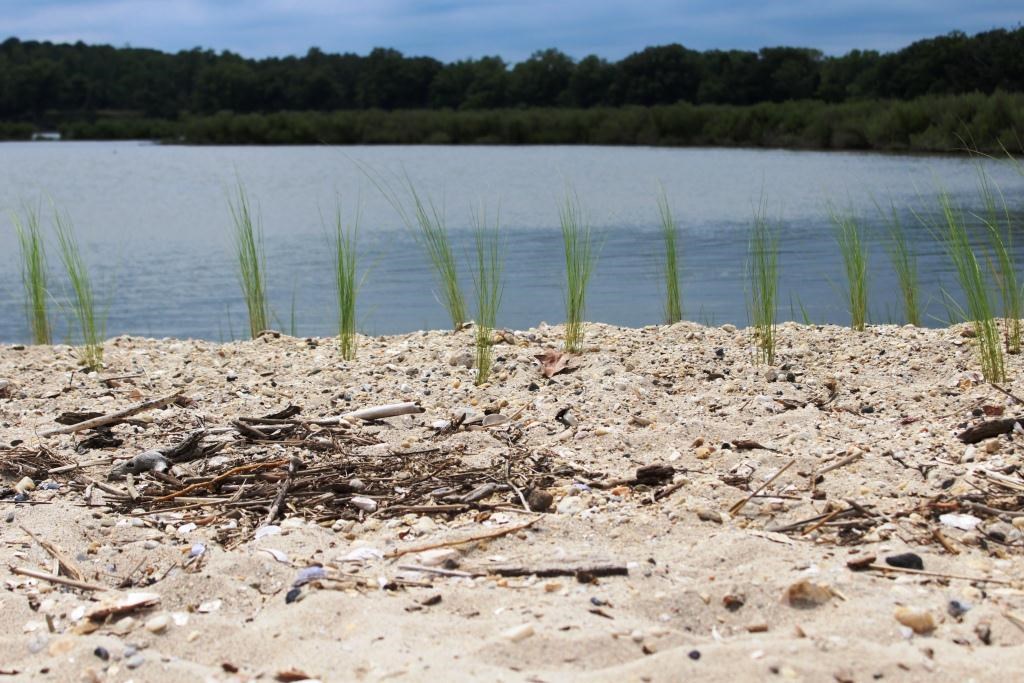Last updated: June 22, 2021
Article
Reducing Erosion with Native Plants

NPS image
Preventing or slowing erosion with native plants is a common ecological practice in land management. The root systems of these plants help to stabilize the soil and prevent open areas from wearing away. Use of native plants also helps restore native habitat for birds, small mammals, and estuarine invertebrates, which are vital to the success of the coastal marsh ecosystem.
With funding from the National Park Foundation and on-the-ground-support from the National Park Service Mid-Atlantic Exotic Plant Management Team, the park planted over 5,000 native grass, forb, shrub, and tree specimens along an important but vulnerable area of shoreline at the birthplace.
Using native plants for erosion control is an excellent biological method to help protect the landscape from erosive forces. Native grasses and sedges are particularly effective due to their fibrous roots that grab and hold the soil, keeping it from washing away.
The following are some of the native plants used here to help control erosion, and restore native plant communities and habitat:
Spartina, commonly known as cordgrass, is a genus of plants frequently found in coastal salt marshes. These grasses are native to the Atlantic coast and form large, dense, fast-growing colonies.
Hibiscus mosheutose has several common names, including marsh hibiscus and swamp-mallow. It is a strikingly showy flowering plant that tis commonly found in eastern wetlands.
Iva frutescens, also known as marsh elder, is a species of flowering plant in the aster family. This shrub tends to grow in narrow bands along the upper margin of marshes, making it the last line of defense in the battle to prevent erosion.
